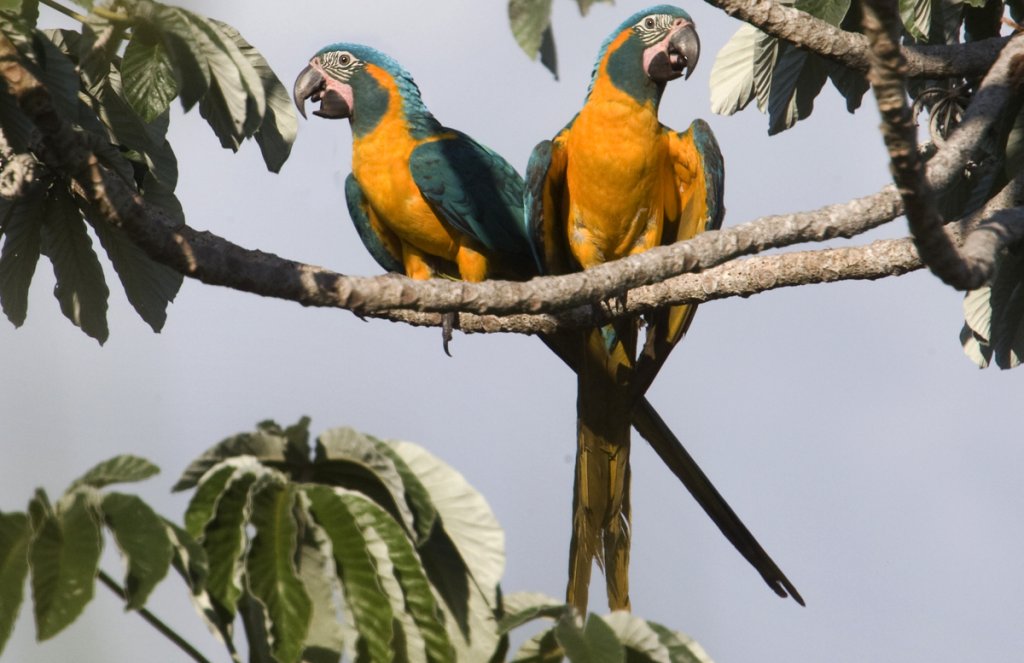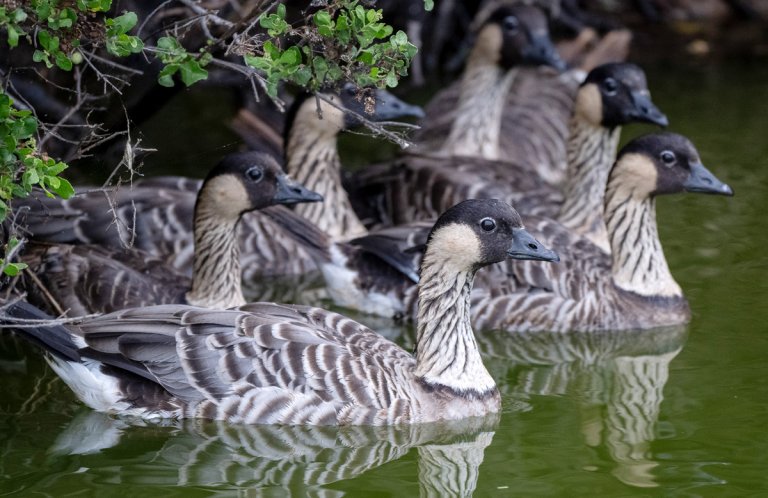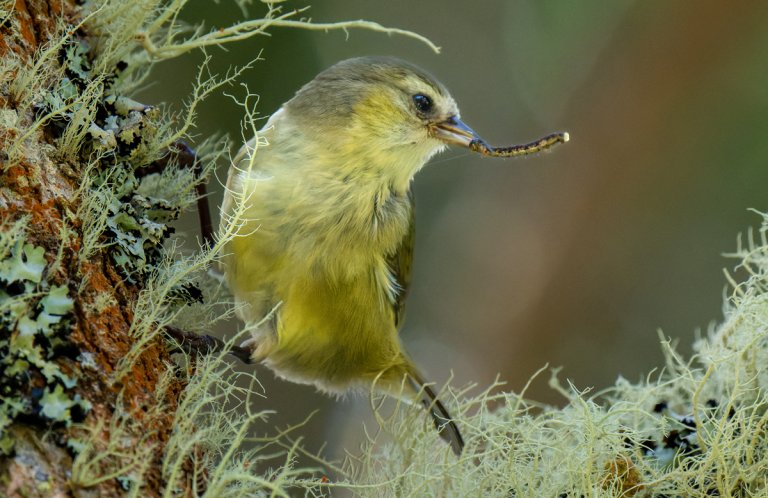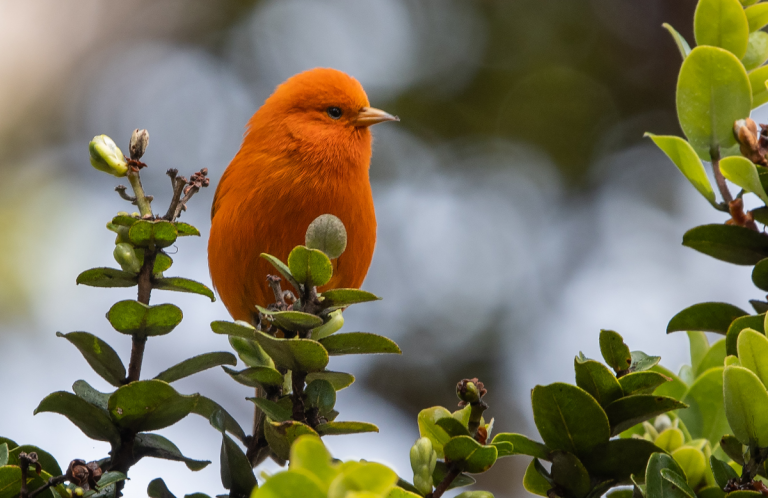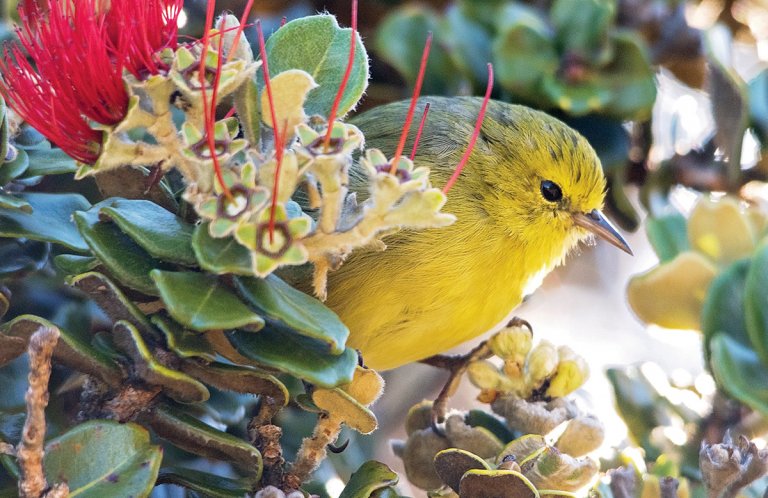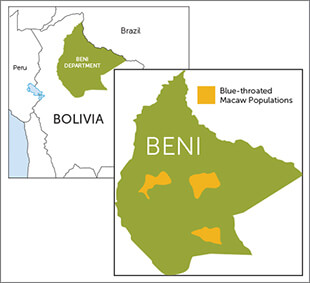 It was once thought to be extinct in the wild. But in 1992, a population of about 50 Blue-throated Macaws was rediscovered in northeastern Bolivia, surviving among the “islands” of palm trees that rise above the Beni savanna's vast, seasonally flooded plains.
It was once thought to be extinct in the wild. But in 1992, a population of about 50 Blue-throated Macaws was rediscovered in northeastern Bolivia, surviving among the “islands” of palm trees that rise above the Beni savanna's vast, seasonally flooded plains.
Through 15 years of conservation programs led by ABC's Bolivian partner, Asociación Armonía — the species' population has slowly climbed. Seventy-six Blue-throated Macaw chicks have fledged from artificial nest boxes — a significant contribution to the species' total population of about 450 birds.
The species' Spanish name, paraba barba azul, means "blue-bearded macaw." Its namesake blue throat distinguishes the bird from the more common Blue-and-yellow Macaw; the two species are often seen together.
Stopping the Trade
The Blue-throated Macaw's habitat surrounds the major city of Trinidad, and as that city has grown, the bird's numbers have diminished.
One of its chief threats has historically been poaching for the global pet trade, but this threat has been reduced thanks to the U.S. Wild Bird Conservation Act of 1992 and Europe's 2007 ban on the import of wild birds. Both laws have helped halt the trafficking of this species and other endangered birds such as Lear's Macaw and Banded Cotinga.
Asociación Armonía's national Blue-throated Macaw community awareness campaign, launched in 2003, provided awareness and instilled Bolivian pride in the country's rare bird, furthering reducing trade in the species. In addition, Armonía's push to create and provide artificial plumes—replacing the real macaw feathers historically used by the region's Moxeño native communities — has saved more than 6,000 macaws, included Blue-throated.
Nest Box Needs
Like other parrots, including Great Green and Military Macaws, the Blue-throated requires large trees with cavities to nest successfully. But after 150 years of cattle ranching and burning in the Beni region, few large trees remain.
That's where the nest box program came in, helping to compensate for this lack of natural nesting sites. Armonía installed 20 artificial nest boxes in 2005, and it took only a year for the birds to begin to use them. In addition to the output of nearly 80 fledged young that have joined the existing population, in 2017, a pair of birds that had fledged from the nest boxes returned to the area to breed.
Sign up for ABC's eNews to learn how you can help protect birds
Bringing Back the Blue
The Blue-throated Macaw has long been a priority for American Bird Conservancy, as well. ABC supported the creation of the Barba Azul Nature Reserve, the first protected area for the species, in 2008.
In addition to the Blue-throated Macaw, Barba Azul provides habitat for more than 300 other bird species , such as the Cock-tailed Tyrant, Streamer-tailed Tyrant, and Orninoco Goose, along with charismatic mammals such as giant anteater and maned wolf. The reserve is an important stopover and wintering site for migratory Bobolinks and Buff-breasted Sandpipers.
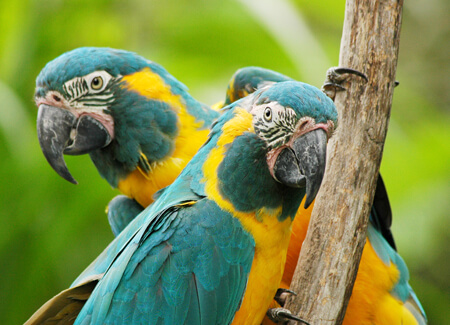
Blue-throated Macaws by Mark R. Layman, Shutterstock
Partner efforts doubled the size of the Barba Azul reserve to over 27,000 acres in 2014, and a 2017 expedition to find nesting areas for the Blue-throated Macaw outside the reserve was successful.
We reached another milestone in 2018, working with partners to acquire a former cattle ranch — site of the successful nest box program — and provide permanent protection for it. This 1,680-acre reserve has been named for Laney Rickman (1952–2017), the founder of a Texas-based nonprofit, Bird Endowment, and passionate supporter of the Blue-throated Macaw nest box program since 2006.
To further honor Laney Rickman's legacy, the Laney Rickman Blue-throated Macaw Fund has been established by her family, Asociación Armonía, and American Bird Conservancy. Donations are welcome and will provide long-term support for the nest box program, as well as habitat conservation and reserve management. Donations received in 2018 will be matched dollar for dollar up to $100,000.
Donate to support the recovery of this Critically Endangered Macaw





































